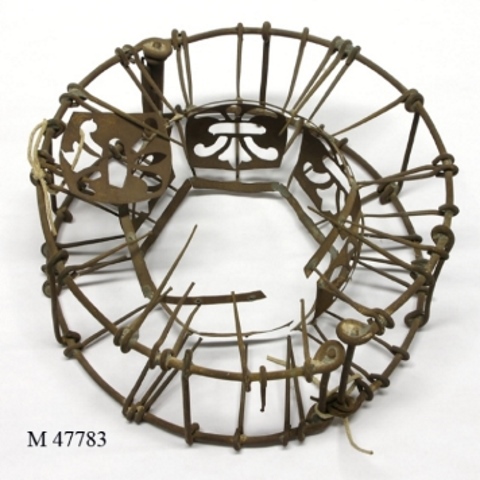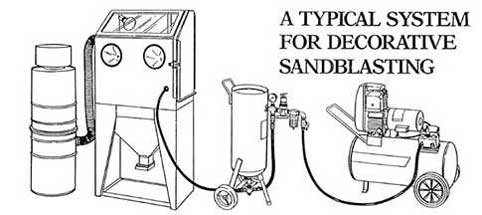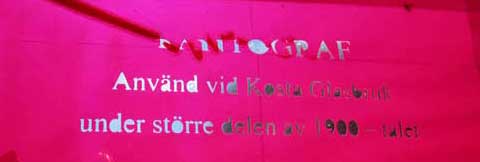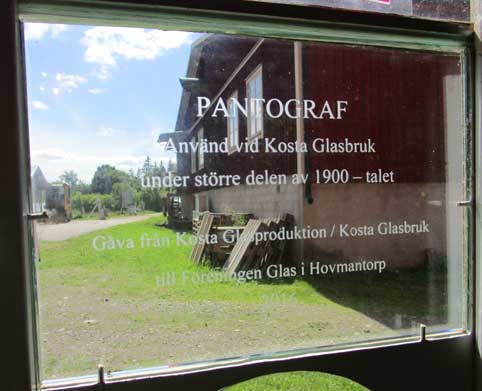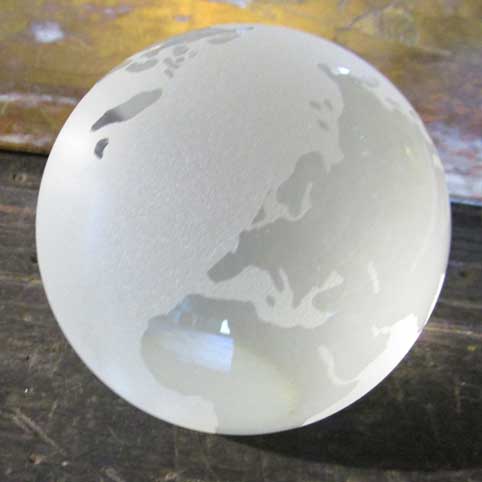— — This is an outdated page, click here for the updated page — —
(Sand) blasting
Today, blasting is used as an alternative to traditional engraving, when matt surfaceas are wanted.
Blasting, patented by B.C. Tilghman 1870, is described in "The book of Inventions" from 1901:
Much cheaper and simpler (than etching) is to ornament the glass by sand blasting, threatening to
completely outrange glass etching but used since 1871.
After this is described how blasting imitates nature in that coastal dwellings have their windows matted by
the sand thrown upon them by the gale and how different machines have been developed for the purpose.
The description continues to tell how preparations must be made to make certain drawings show matt on a
transparent ground or vice-versa and that this requires that a paper stencil is used to protect areas that
shall be un-affected. The stencil is glued onto the object and she is now allowed to, on rollers or a little
trolley, slowly move forwards and back before the mouth of the blaster. Thereby will the un-protected glass will
be matted by the vicious attacks from the sand while the paper pattern quite stands for a time.

